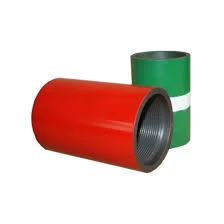- Afrikaans
- Albanian
- Amharic
- Arabic
- Armenian
- Azerbaijani
- Basque
- Belarusian
- Bengali
- Bosnian
- Bulgarian
- Catalan
- Cebuano
- Corsican
- Croatian
- Czech
- Danish
- Dutch
- English
- Esperanto
- Estonian
- Finnish
- French
- Frisian
- Galician
- Georgian
- German
- Greek
- Gujarati
- Haitian Creole
- hausa
- hawaiian
- Hebrew
- Hindi
- Miao
- Hungarian
- Icelandic
- igbo
- Indonesian
- irish
- Italian
- Japanese
- Javanese
- Kannada
- kazakh
- Khmer
- Rwandese
- Korean
- Kurdish
- Kyrgyz
- Lao
- Latin
- Latvian
- Lithuanian
- Luxembourgish
- Macedonian
- Malgashi
- Malay
- Malayalam
- Maltese
- Maori
- Marathi
- Mongolian
- Myanmar
- Nepali
- Norwegian
- Norwegian
- Occitan
- Pashto
- Persian
- Polish
- Portuguese
- Punjabi
- Romanian
- Russian
- Samoan
- Scottish Gaelic
- Serbian
- Sesotho
- Shona
- Sindhi
- Sinhala
- Slovak
- Slovenian
- Somali
- Spanish
- Sundanese
- Swahili
- Swedish
- Tagalog
- Tajik
- Tamil
- Tatar
- Telugu
- Thai
- Turkish
- Turkmen
- Ukrainian
- Urdu
- Uighur
- Uzbek
- Vietnamese
- Welsh
- Bantu
- Yiddish
- Yoruba
- Zulu
Understanding Well Casing Couplings and Their Importance in Oil and Gas Operations
Understanding Well Casing Couplings A Critical Component in Oil and Gas Operations
In the realm of oil and gas exploration and production, well casing couplings play a pivotal role in ensuring the structural integrity of wells. These couplings are essential components that connect sections of casing pipes, enabling a robust and reliable formation to be created around the wellbore. In this article, we will explore the importance of well casing couplings, their types, materials, and manufacturing processes, as well as their role in enhancing safety and efficiency in drilling operations.
What is Well Casing?
Before delving into well casing couplings, it is crucial to understand what well casing is. Well casing is a series of steel pipes installed in the wellbore to provide structural support, prevent the collapse of the borehole, and isolate the various subsurface formations encountered during drilling. Additionally, casing helps manage the pressures and temperatures within a well, protecting both the environment and the integrity of the well itself.
The Role of Well Casing Couplings
Much like any construction project, the strength and durability of the well depend on how well its components are connected. Well casing couplings act as connectors that join individual sections of casing pipe. They are specifically designed to withstand high pressure and ensure a leak-proof seal between casing segments. By creating a seamless joint, couplings contribute to the overall stability of the well structure, preventing any unwanted movement or failure.
Types of Well Casing Couplings
There are several types of well casing couplings, each designed for specific applications and conditions. The most common types include
1. Threaded Couplings These feature male and female threads that allow for easy connection and disconnection of casing sections. They are widely used for their effectiveness and ease of installation.
2. Welded Couplings As the name suggests, these couplings are welded to the casing pipes. They provide a permanent connection, making them suitable for high-stress applications where maximum strength is required.
3. Flanged Couplings These involve flange fittings that are bolted together. Flanged couplings are easier to reinstall compared to welded ones and are used in systems requiring frequent maintenance.
4. Sleeve Couplings Used in the repair and enhancement of existing casing, these couplings provide flexibility in making connections. They can be inserted into the casing to support damaged sections.
well casing coupling

Materials and Manufacturing
The choice of materials for well casing couplings is critical, as they must withstand harsh conditions including high pressure, corrosive environments, and extreme temperatures. Typically, couplings are made from high-strength carbon steel or stainless steel. Some modern advancements have also introduced alloy steels specifically formulated to resist corrosion and wear.
The manufacturing process of casing couplings involves several key steps, including
1. Material Selection Choosing the appropriate type of steel based on mechanical properties and environmental needs.
2. Machining Cutting the metal to shape and creating the threads or flanges.
3. Heat Treatment Enhancing the mechanical properties such as toughness and strength through controlled heating processes.
4. Finishing This step might include coating to improve corrosion resistance or further machining to ensure precise dimensions.
Safety and Efficiency Enhancements
Using high-quality well casing couplings not only enhances the structural integrity of wells, but it also improves safety for workers and equipment. By ensuring that there are no leaks or failures in the well structure, the risk of blowouts or environmental contamination is significantly reduced.
Furthermore, the efficiency of drilling operations is enhanced when the casing system functions effectively. Reliable couplings reduce the risk of downhole issues that may result in costly downtime. This operational efficiency translates into better financial performance for oil and gas companies.
Conclusion
In summary, well casing couplings are fundamental components in the oil and gas industry that ensure the durability and safety of well structures. Understanding their types, materials, and manufacturing processes is essential for anyone involved in drilling operations. By prioritizing high-quality couplings and conducting regular maintenance, operators can significantly enhance the safety and efficiency of their drilling efforts. Ultimately, the continued exploration and responsible extraction of oil and gas resources depend on such vital components, underscoring their importance in the industry.
-
Tubing Pup Joints: Essential Components for Oil and Gas OperationsNewsJul.10,2025
-
Pup Joints: Essential Components for Reliable Drilling OperationsNewsJul.10,2025
-
Pipe Couplings: Connecting Your World EfficientlyNewsJul.10,2025
-
Mastering Oilfield Operations with Quality Tubing and CasingNewsJul.10,2025
-
High-Quality Casing Couplings for Every NeedNewsJul.10,2025
-
Boost Your Drilling Efficiency with Premium Crossover Tools & Seating NipplesNewsJul.10,2025







